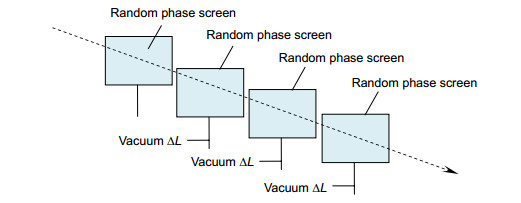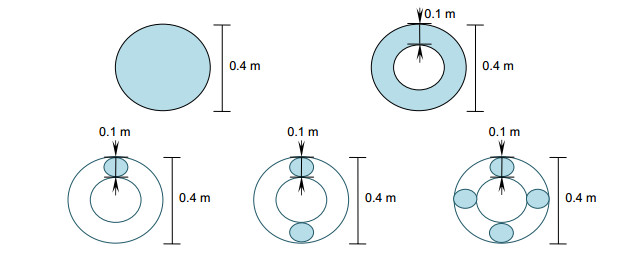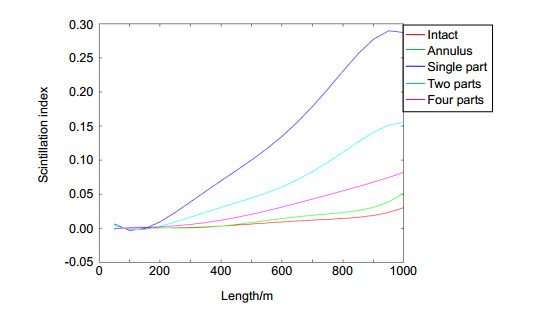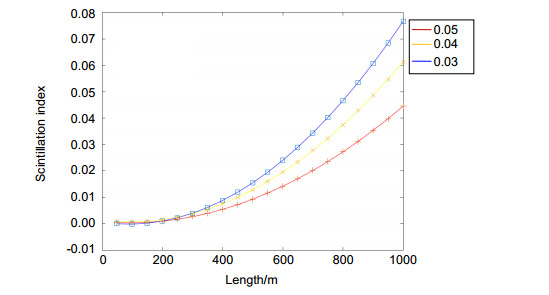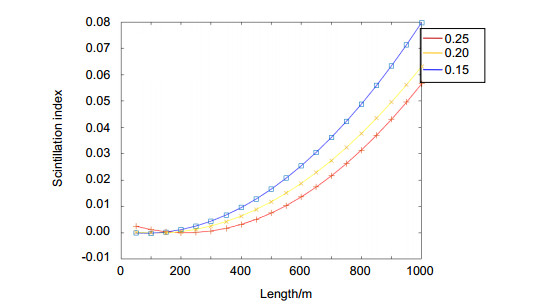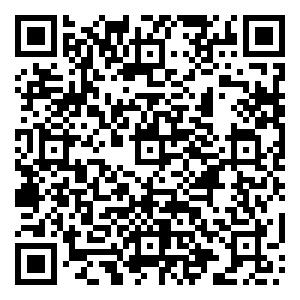Analysis of space diversity method in modulating retro-reflector optical communication
-
摘要:
在逆向调制无线光通信系统中,大气湍流对系统的影响大于传统的无线光通信系统。本文研究了一种基于逆向端调制器分集的逆向调制无线光通信系统,以减小大气湍流对系统的影响。利用相位屏法,建立了弱湍流下的激光大气的传输模型,对比分析了逆向调制无线光通信系统逆向端逆向调制器分集和不分集分别所受到的大气湍流的影响。结果显示在相同情况下,逆向调制无线光通信系统在逆向端对逆向调制器进行分集能抑制大气湍流对系统的影响,使整个系统的闪烁指数下降。
 Abstract:
Abstract:In the modulating retro-reflector (MRR) communication system, the influence of the atmospheric turbulence on the system is more serious than that of the traditional FSO communication system. In this paper, in order to reduce the impact of the atmospheric turbulence, an improved scheme based on the diversity of the retro-reflector is proposed. Using the power spectrum inversion method, the atmospheric propagation model of MRR under weak turbulence is established. The influence of the atmospheric turbulence on the retro-reflector diversity system and the traditional MRR communication system is compared and analyzed. The results of the numerical analysis show that under the same condition, the retro-reflector diversity of modulating retro-reflector (MRR) communication system can reduce the scintillation index caused by the atmospheric turbulence.
-

Overview: Free space optical communications (FSO) has become a hot research topic in the field of optical communications. Compared with the traditional optical fiber communication, the main characteristic of wireless optical communication is to get rid of the optical fiber signal, which can be used in some special occasions. Generally speaking, the advantages of FSO are as follows: the frequency of the optical signal is high enough to avoid interference by the surrounding electromagnetic waves; Enough capacity to transmit at speeds up to a gigabit per second; It has a separate communication band and does not occupy the existing band. The traditional FSO needs to load the laser transmitting/receiving system at both ends, and the complex tracking system needs to be built, which increases the weight, volume, power consumption and technical complexity of the system. Thus they become an important factor restricting the application of FSO. The modulating retro-reflector (MRR) system can eliminate the laser transmitter and the tracking system of a terminal in the communication link. As a consequence; it greatly reduces the weight, volume and power consumption of one end of the link and effectively solves the application limitation of FSO. However, the MRR system is more vulnerable to the atmospheric turbulence than the FSO system. Although so far, there are many literatures on efficiently reducing the atmospheric turbulence, most of them are based on the traditional FSO communication system. In this paper, we build the MRR laser atmospheric propagation model under weak turbulence by using the power spectrum inversion method. Scintillation index is a physical quantity describing the degree of turbulence in the atmosphere. The numerical analyses show that under the same condition and for the diversity of the reverse modulation echo reflection link at a propagation distance of 1000 m, the scintillation index increases continuously as the distance increases, and decreases as the number of sub-sets increases. When the number of modulators is four, the scintillation index is similar to that of the ring-shaped reverse modulator. The more diverse is, the greater the cost is. Therefore, within a kilometer range, it is an ideal solution to select four inverse modulators. With simulation of the four parts diversity model, it is found that with the increase of the distance between antennas, the amplitude of the scintillation index decreases. It is also suggested that increasing the aperture of the reverse-end-modulated end-diversity antenna can also reduce the system scintillation index.
-

-
-
[1] 陈志晓.自由空间光通信中光强闪烁抑制的研究[D].北京: 北京邮电大学, 2013.
Chen Z X. Research on scintillation supression techniques for free-space optical communications[D]. Beijing: Beijing University of Posts and Telecommunications, 2013.
http://cdmd.cnki.com.cn/Article/CDMD-10013-1013326164.htm [2] 任建迎, 孙华燕, 张来线. "猫眼"逆向调制自由空间光通信技术[J].激光与红外, 2017, 47(1): 98-102. doi: 10.3969/j.issn.1001-5078.2017.01.019
Ren J Y, Sun H Y, Zhang L X. Free space optical communication technology based on cat-eye modulating retro-reflector[J]. Laser & Infrared, 2017, 47(1): 98-102. doi: 10.3969/j.issn.1001-5078.2017.01.019
[3] 张忠玉, 汪井源, 徐智勇, 等.基于散斑检测的逆向调制光通信[J].光子学报, 2017, 46(12): 1206003. http://d.old.wanfangdata.com.cn/Periodical/gzxb201712023
Zhang Z Y, Wang J Y, Xu Z Y, et al. Modulating retro-reflector communication system based on speckle detection[J]. Acta Photonica Sinica, 2017, 46(12): 1206003. http://d.old.wanfangdata.com.cn/Periodical/gzxb201712023
[4] 邱灏, 汪井源, 徐智勇, 等.逆向调制光通信技术[J].军事通信技术, 2015, 36(2): 29-33. http://d.old.wanfangdata.com.cn/Periodical/jgyhw201701019
Qiu H, Wang J Y, Xu Z Y, et al. Modulating retro-reflector optical communication technology[J]. Journal of Military Communications Technology, 2015, 39(2): 29-33. http://d.old.wanfangdata.com.cn/Periodical/jgyhw201701019
[5] Avlonitis N, Charlesworth P B. Performance of retro reflector-modulated links under weak turbulence[J]. IET Optoelectronics, 2012, 6(6): 290-297. doi: 10.1049/iet-opt.2011.0098
[6] Mahon R, Moore C I, Ferraro M, et al. Atmospheric turbulence effects measured along horizontal-path optical retro-reflector links[J]. Applied Optics, 2012, 51(25): 6147-6158. doi: 10.1364/AO.51.006147
[7] Rabinovich W S, Mahon R, Ferraro M, et al. Reduction of scintillation in optical modulating retro-reflector links[J]. Optics Express, 2014, 22(23): 28553-28565. doi: 10.1364/OE.22.028553
[8] 魏宾.基于声换能器的"猫眼"逆向光调制技术及应用[D].成都: 电子科技大学, 2012.
[9] 徐山河, 肖沙里, 王珊, 等.基于声光调制的逆向调制光通信系统研究[J].激光技术, 2015, 39(5): 598-602. http://d.old.wanfangdata.com.cn/Periodical/jgjs201505004
Xu S H, Xiao S L, Wang S, et al. Research on modulating retro-reflector technology of laser communication systems based on acousto-optic modulation[J]. Laser Technology, 2015, 39(5): 598-602. http://d.old.wanfangdata.com.cn/Periodical/jgjs201505004
[10] 潘璐, 汪井源, 徐智勇, 等.逆向调制光通信的大气湍流及孔径平均效应[J].半导体光电, 2019, 40(1): 140-144. http://d.old.wanfangdata.com.cn/Periodical/bdtgd201901028
Pan L, Wang J Y, Xu Z Y, et al. Effect of the atmospheric turbulence and aperture mean on modulating retro-reflector optical communication[J]. Semiconductor Optoelectronics, 2019, 40(1): 140-144. http://d.old.wanfangdata.com.cn/Periodical/bdtgd201901028
[11] 李长盈.调制回复反射自由空间光通信系统的研究[D].杭州: 杭州电子科技大学, 2019.
Li C Y. Research on modulated retro-reflective free space optical communication system[D]. Hangzhou: Hangzhou Dianzi University, 2019.
http://cdmd.cnki.com.cn/Article/CDMD-10336-1019023020.htm [12] 王惠琴, 李源, 胡秋, 等.兰州地区夜间光强起伏特性实验[J].光子学报, 2018, 47(4): 0401001. http://www.wanfangdata.com.cn/details/detail.do?_type=perio&id=gzxb201804024
Wang H Q, Li Y, Hu Q, et al. Experimental investigation on light intensity fluctuation at night in Lanzhou area[J]. Acta Photonica Sinica, 2018, 47(4): 0401001. http://www.wanfangdata.com.cn/details/detail.do?_type=perio&id=gzxb201804024
[13] 边永昌.大气对空间光通信影响研究[D].长春: 长春理工大学, 2007.
Bian Y C. The research on atmosphere influence of space optical communication[D]. Changchun: Changchun University of Science and Technology, 2007.
http://cdmd.cnki.com.cn/Article/CDMD-10186-2007063728.htm -


 E-mail Alert
E-mail Alert RSS
RSS
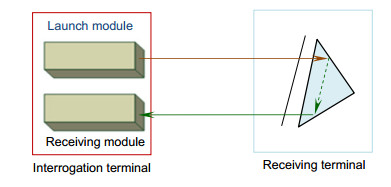
 下载:
下载:

